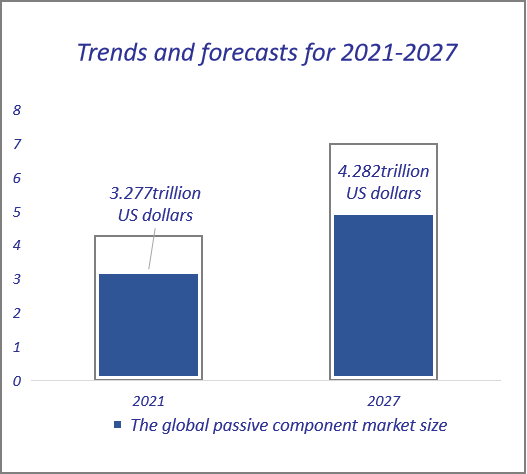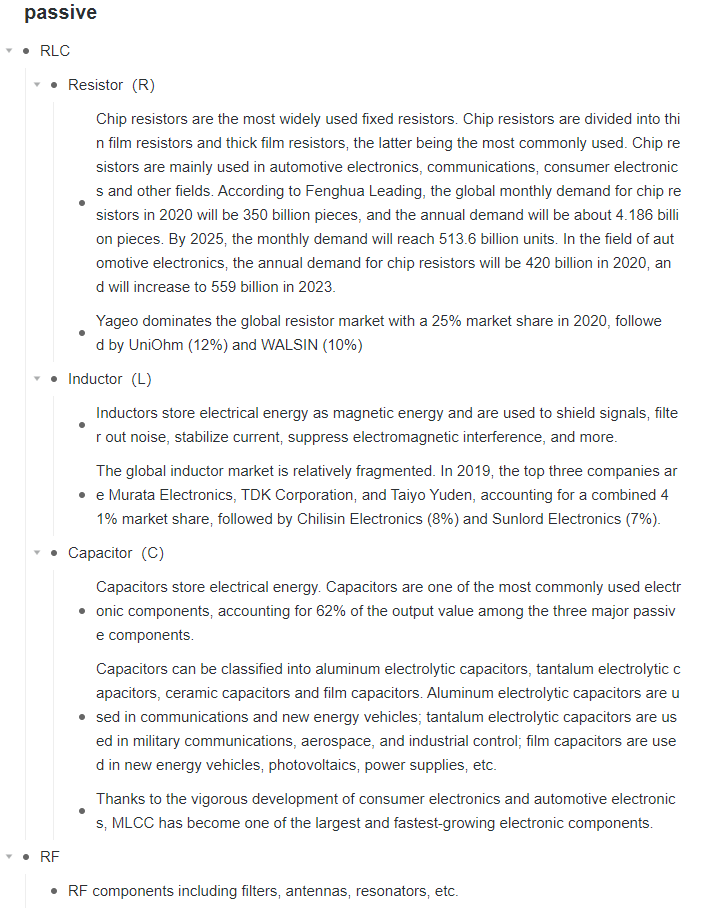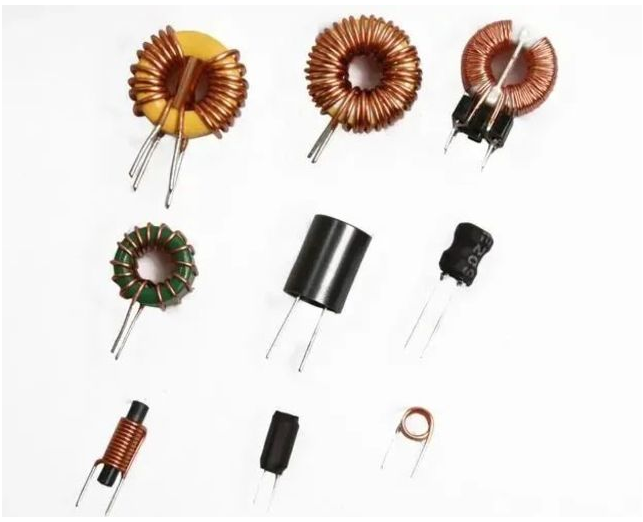What is MLCC and How Does it Work? A Comprehensive Guide
what are MLCC and MLCC Usage in Multiple Application Areas.
What is MLCC and How Does it Work? A Comprehensive Guide
Do you know how many MLCC are in the mobile phone you are holding at the moment?
30,000! In the past, fuel vehicles only needed about 3,000 MLCC
It is an important component that we use every day and can be seen everywhere. It is the "rice" of the electronics industry, an indispensable basic component, and the cornerstone of the electronics industry.
MLCC - known as the most important passive component
Even passive components do not require advanced technology, rapid product updates, or huge investment scales. However, passive components also have a broad market, and demand in emerging fields such as 5G communications, cloud computing, and electric vehicles continues to grow.
According to Mordor Intelligence data:
Scale trend and forecast during 2021-2027 (unit: US$100 million)

MLCC are divided into low-end and high-end MLCCs, which have different properties such as high temperature resistance, high voltage resistance, high capacitance, and long life.




The downstream applications of MLCC include consumer electronics, industry, communication, automobile, military and so on. According to Morgan Stanley, consumer electronics is the main application, accounting for about 44% of the market.
According to Murata, by 2021, a high-end smartphone will use more than 1,000 MLCCs, while traditional fuel vehicles will use about 3,000-5,000 MLCCs. Murata expects that the types and quantity of MLCCs used in automobiles will further increase in the future; a hybrid vehicle needs about 12,000 MLCCs, and a pure electric vehicle needs about 18,000 MLCCs. For example, on a certain L2+ self-driving electric vehicle, the number of MLCCs exceeds 10,000, and some high-end models even exceed 30,000.
MLCC Usage in Multiple Application Areas
Going back to the beginning, do you know how many MLCCs are in the mobile phone you are holding at the moment?
According to Chlue Research, high-end smartphones require an average of 1,000-1,200 MLCCs;
For the entire mobile phone market:a smartphone requires 800 MLCCs. EMData found that the number of MLCCs required by the iPhone has increased from 177 in the original iPhone to 1,100 in the iPhone X through the statistics of previous iPhones. SEMCO predicts that the number of MLCC mobile phones required for a single generation of 5G mobile phones will increase by 30-40% compared with 4G mobile phones, reaching 1,000 units. It is expected that the demand for mobile phone MLCC will maintain a growth rate of about 10% in the next three years.
For 5G base stations: MLCC demand mainly comes from baseband unit (BBU) and active antenna unit (AAU). BBU needs high-value capacitors, and AAU needs a large number of high-power and high-Q capacitors. 5G base station stations have higher reliability requirements for MLCC. strict. According to VENKEL, a 4G base station requires 3,750 MLCCs, and the number of MLCCs required for a 5G base station will be three times that of a 4G base station.
At the same time, MLCCs are widely used in automobiles, including ADAS, various control systems, satellite positioning systems, battery management systems, etc., which require a large number of MLCCs. In traditional fuel vehicles, MLCCs are found in various electronic systems, including power systems, safety systems, comfort systems, entertainment systems, etc. Among them, the power system needs about 600 untis; the safety system needs about 1000-1500 untis, which is the most; comfort The system requires 1,000 units; the entertainment system requires more than 500 units, and as the number of on-board electronic devices such as monitors increases, the required number will also increase.
prediction
According to Chinacera's prediction, the global demand for automotive MLCCs in 2020 will be about 379 billion, a year-on-year increase of 9.1%. It is expected that the demand will reach 473 billion by 2025, with an average annual growth rate of about 4.6%.